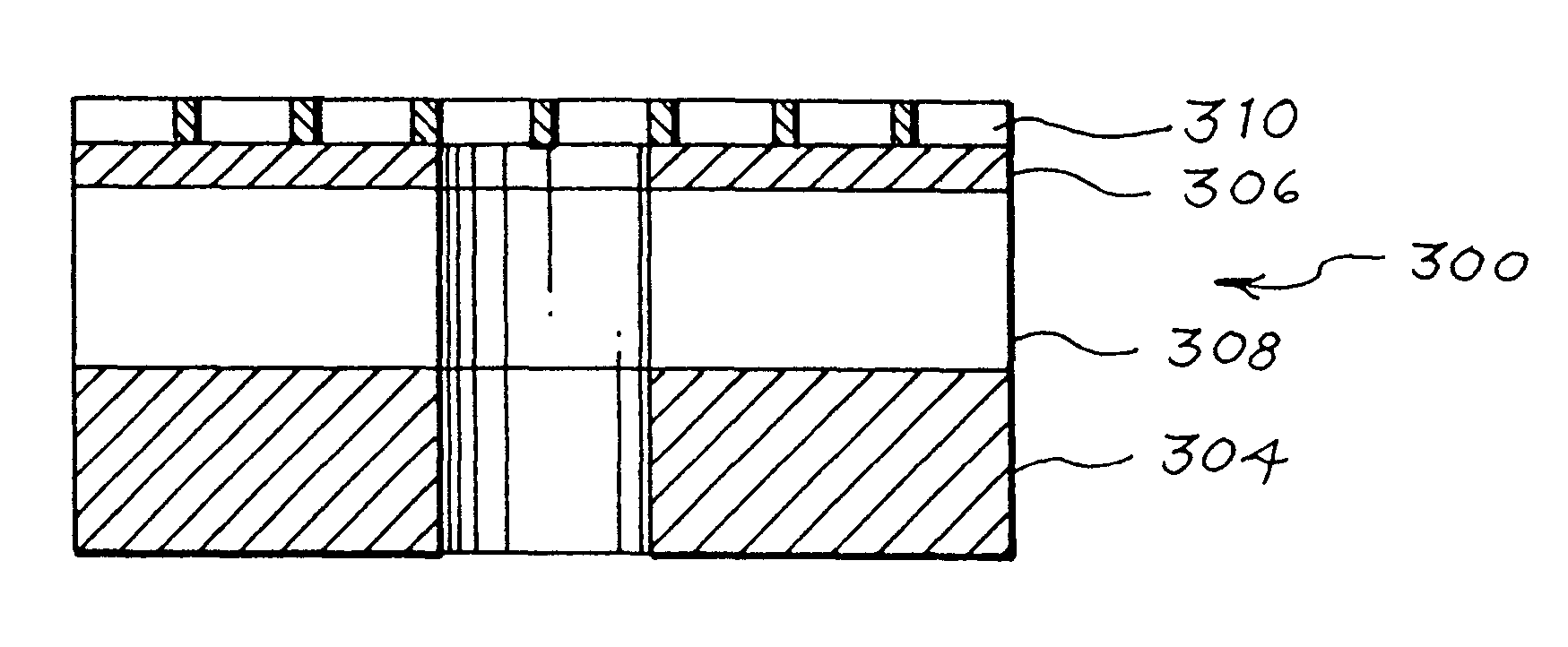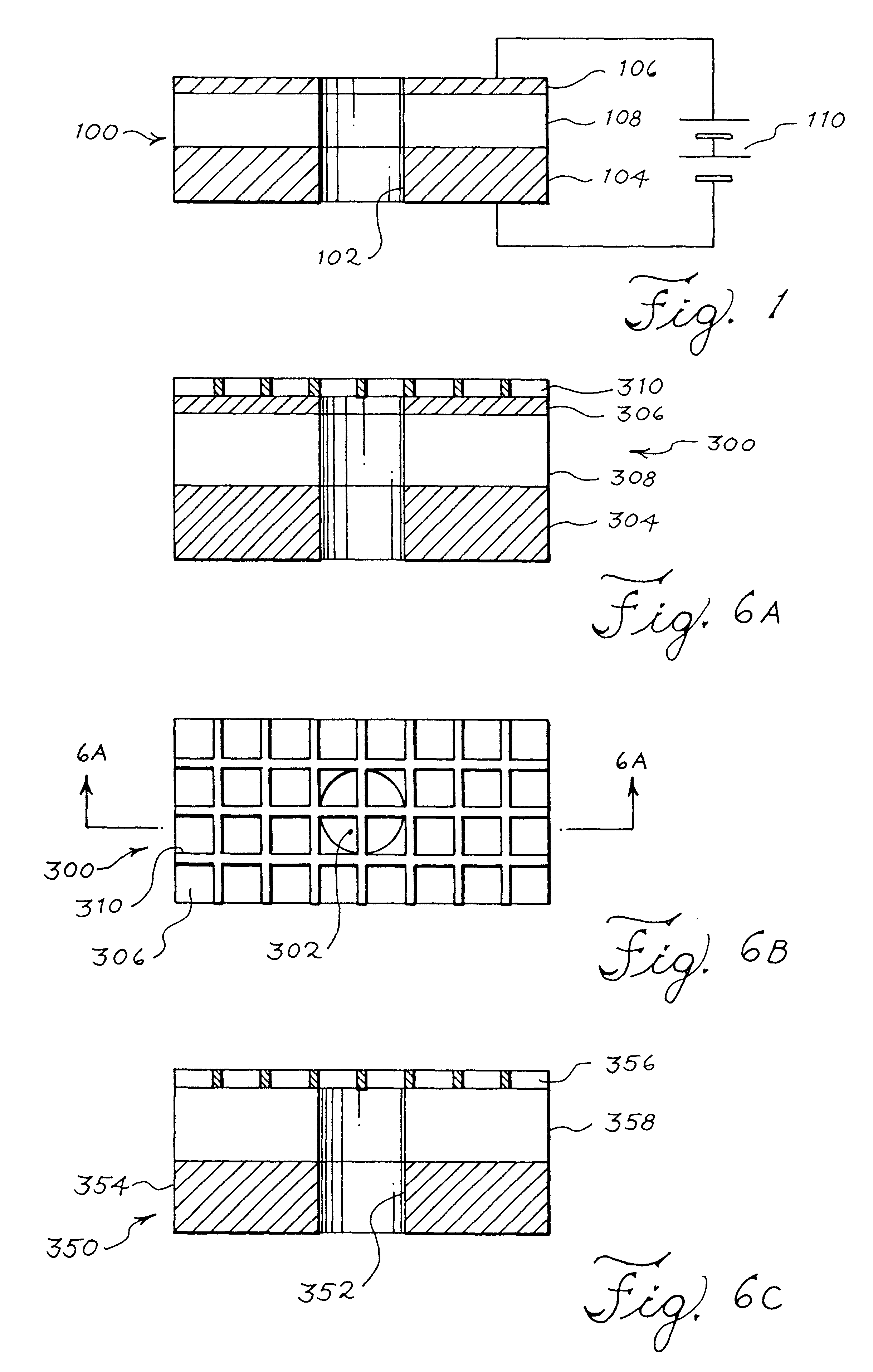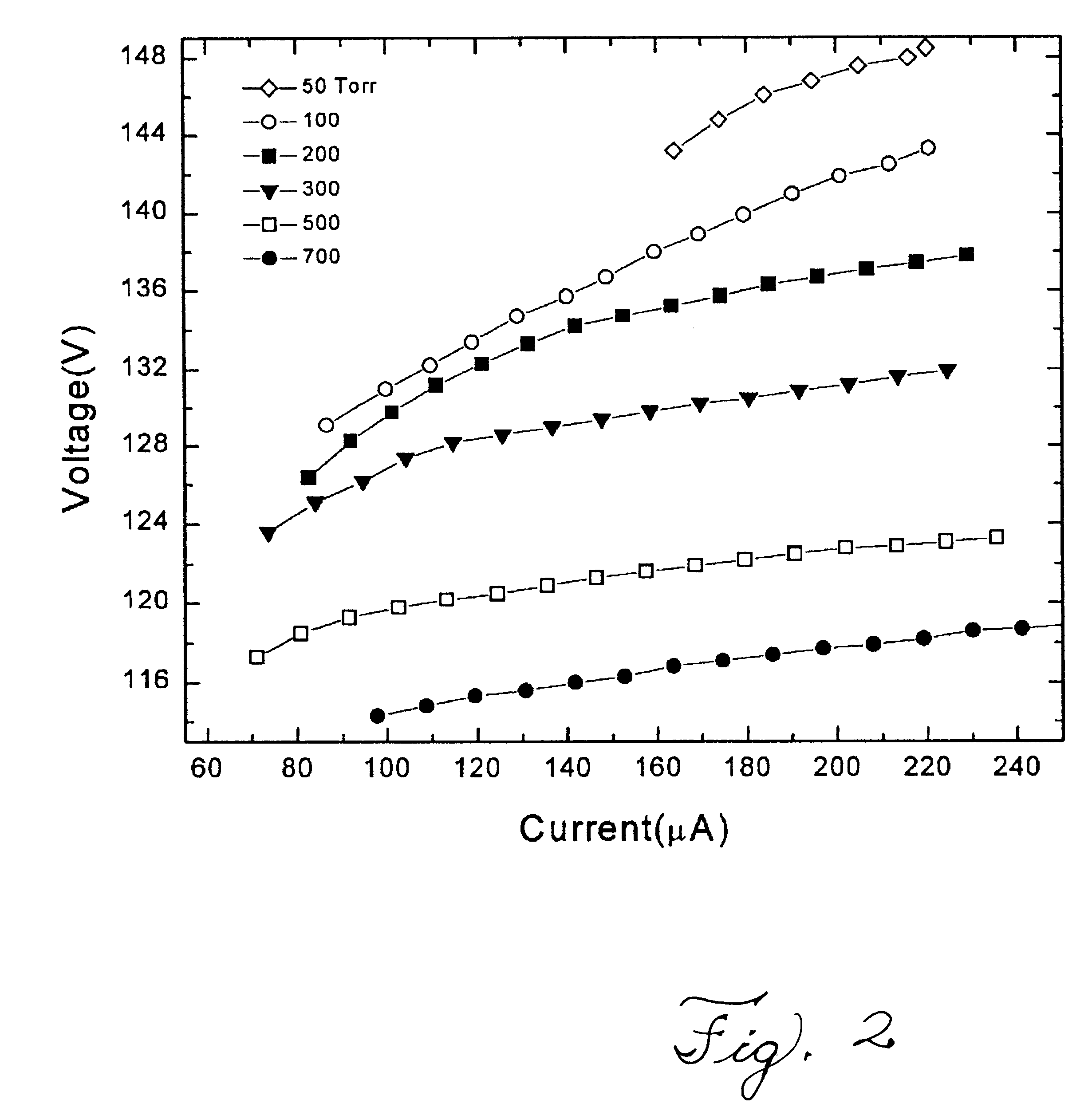Microdischarge devices and arrays
a technology of micro-discharge devices and arrays, which is applied in the manufacture of electric discharge tubes/lamps, discharge tubes luminescnet screens, instruments, etc., can solve the problems of expensive mounting fixtures, bulky devices, fragile quartz or glass envelopes,
- Summary
- Abstract
- Description
- Claims
- Application Information
AI Technical Summary
Benefits of technology
Problems solved by technology
Method used
Image
Examples
Embodiment Construction
One example of such a microdischarge device 100 has a 25 .mu.m thick copper foil as the first electrode 106, a polyimide film 5-8 .mu.m thick as the insulator 108, and a 2000 .ANG. thick Ni film as a second electrode 104. FIG. 2 shows the voltage-current (V-I) characteristics for this Ni / polyimide / Cu microdischarge device. The polymer film for the insulator 108 was formed by spin coating a solution of 20 wt % of poly (trimetallic anhydride chloride-alt benzidine) in a 1-methyl-2-pyrolidinone / xylene solution on the copper foil. Residual solvent was evaporated by a hot plate and a vacuum drying process at >200.degree. C. The Ni second electrode 104 was next evaporated onto the polymer, giving a total device thickness of about 30 .mu.m. Microdischarge cavities 14 having a diameter of typically 150 .mu.m were then produced either by mechanically drilling or using a pulsed Ti:Al.sub.2 O.sub.3 laser to bore through the second electrode 104, insulator 108 and first electrode 106. Once fabr...
PUM
 Login to View More
Login to View More Abstract
Description
Claims
Application Information
 Login to View More
Login to View More - R&D
- Intellectual Property
- Life Sciences
- Materials
- Tech Scout
- Unparalleled Data Quality
- Higher Quality Content
- 60% Fewer Hallucinations
Browse by: Latest US Patents, China's latest patents, Technical Efficacy Thesaurus, Application Domain, Technology Topic, Popular Technical Reports.
© 2025 PatSnap. All rights reserved.Legal|Privacy policy|Modern Slavery Act Transparency Statement|Sitemap|About US| Contact US: help@patsnap.com



